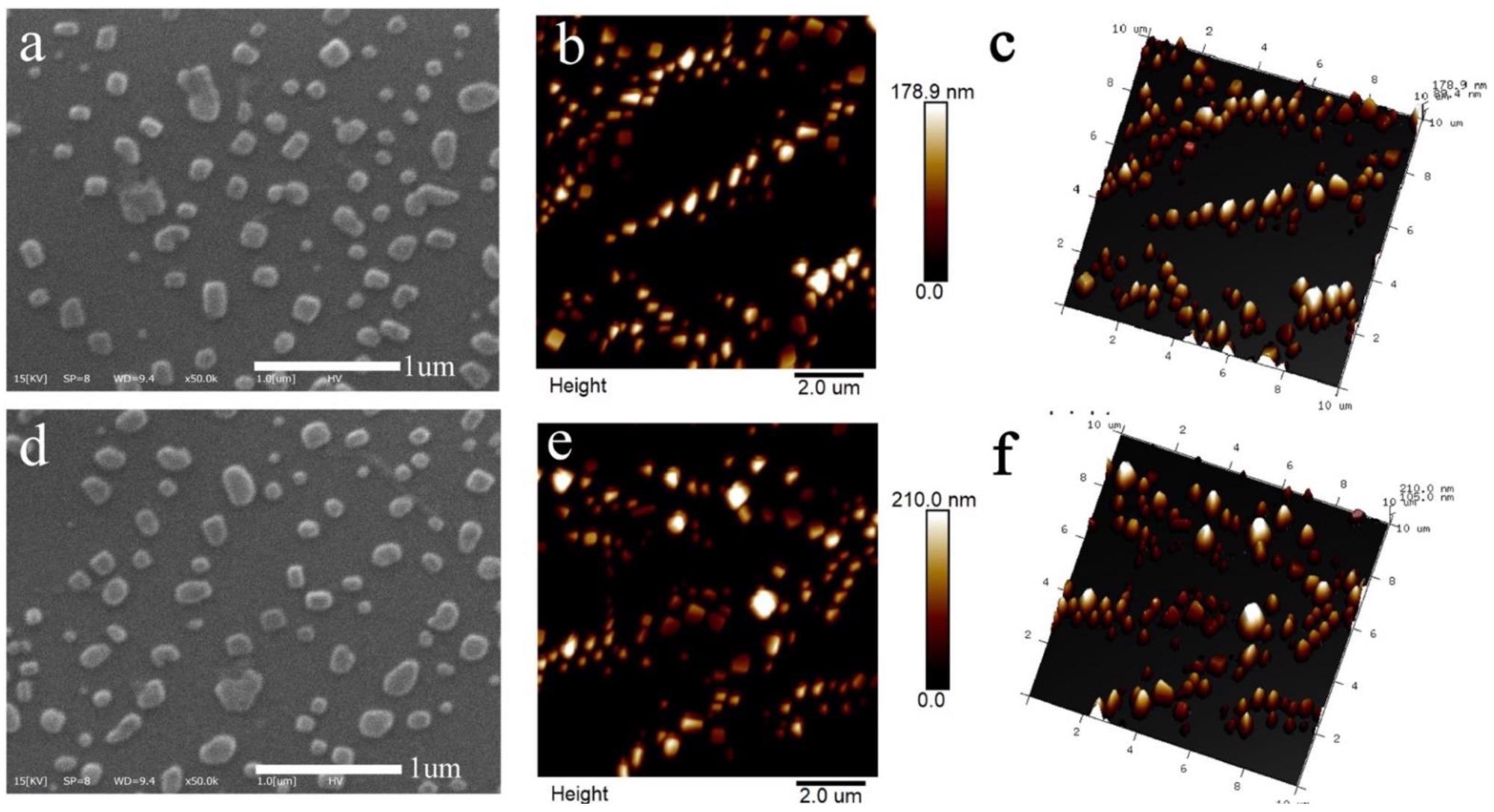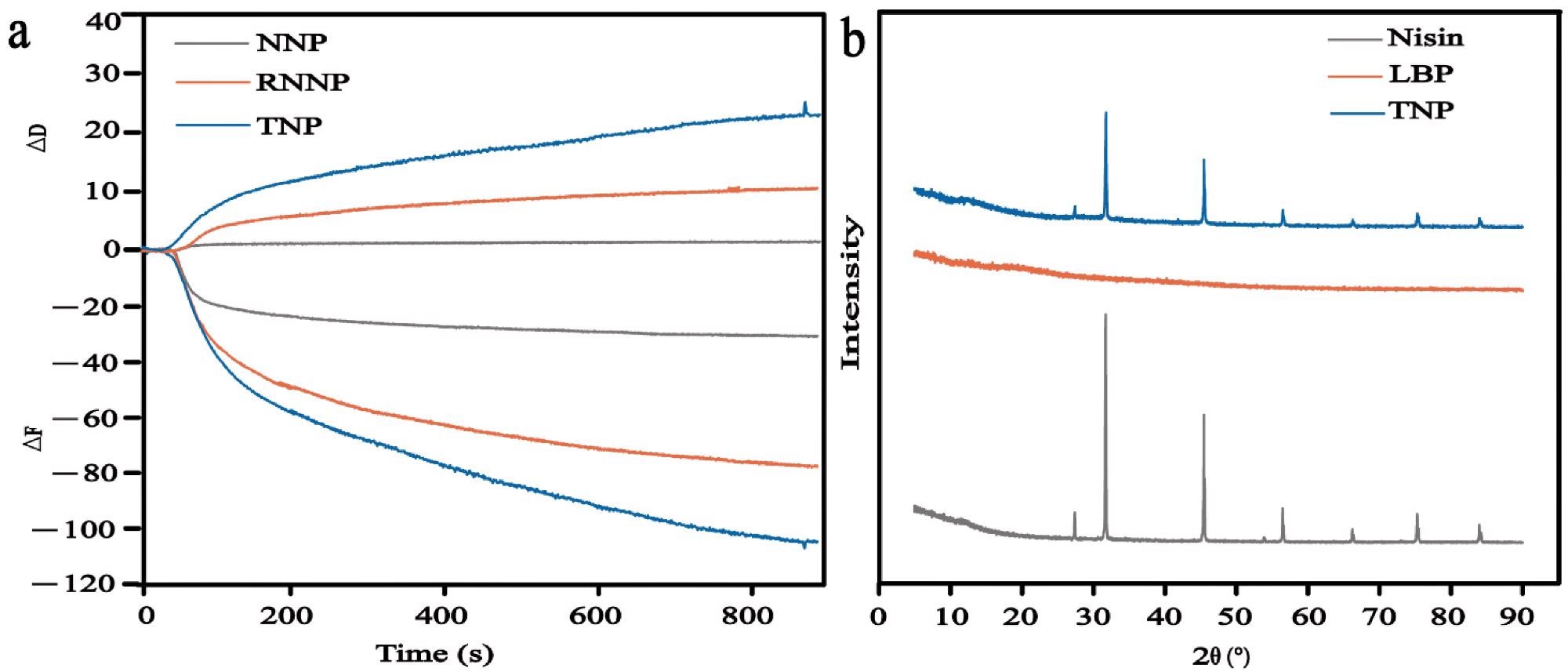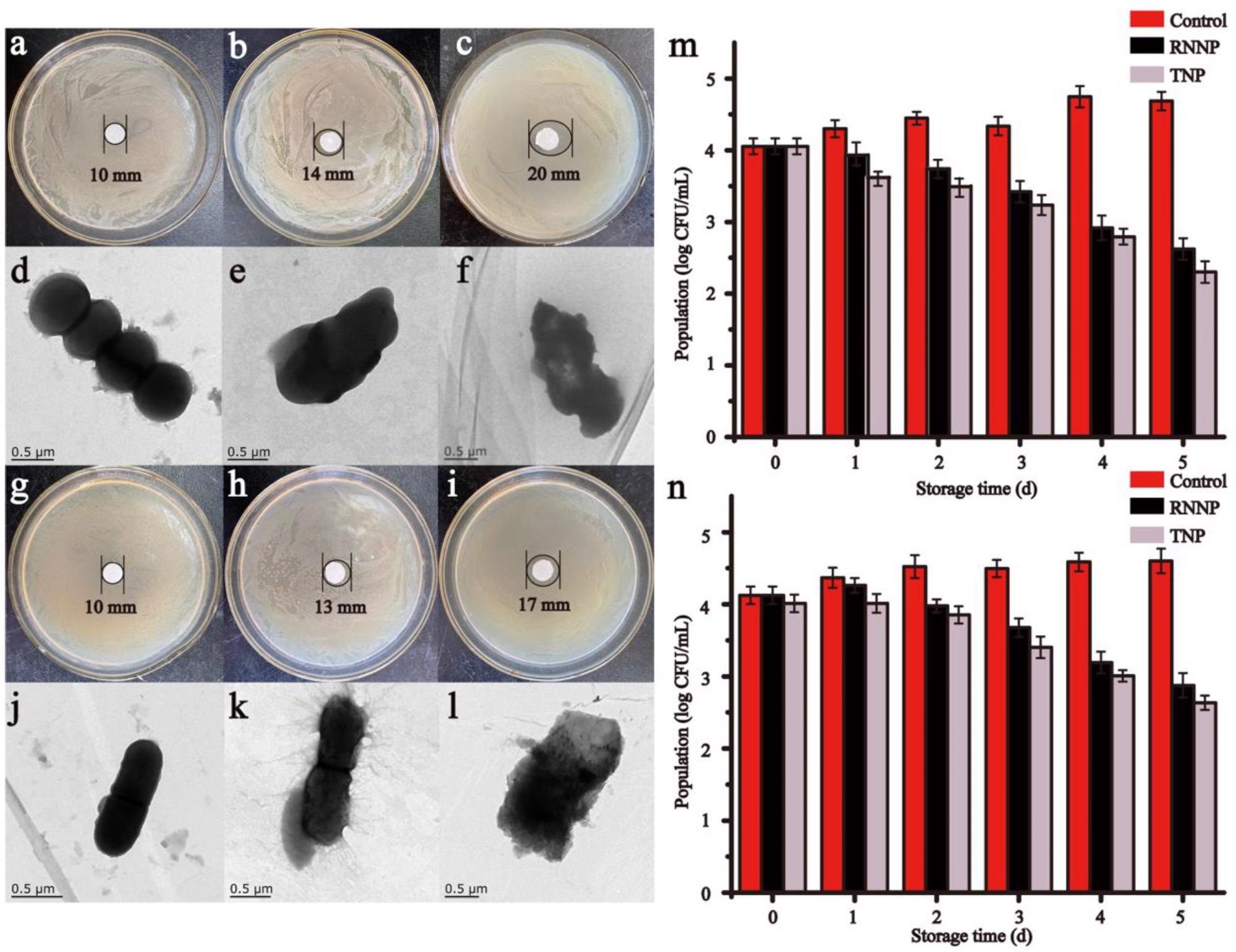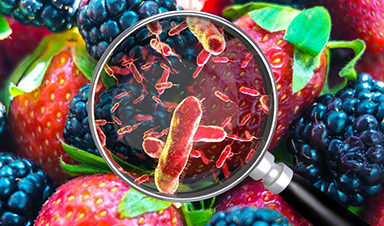A novel study published in the journal, Foods, describes edible nanoparticle-based antibacterial agents to control foodborne diseases.
This research comprises a ternary nanoparticle with two active ingredients and a carrier material that was prepared from rosemary essential oil, nisin and Lycium barbarum polysaccharides.
Using Edible Nanoparticles
Interestingly, the use of functional nanoparticles with food-grade biological macromolecules including protein and polysaccharides has become a popular research area for novel food additives.
This is due to these molecules consisting of components that have a large surface area, a simple preparation process as well as having a flexible structure.

Figure 1. The morphology of nanoparticles including SEM-micrographs and surface, 3-Dimensional AFM images of RNNP (a–c) and TNP (d–f). © Lin, L., Luo, C., Li, C., Chen, X. and Cui, H., (2022)
This is especially significant for the application against foodborne diseases that can be attributed to pathogenic microorganism contamination, resulting in high mortality and morbidity on a global scale.
These pathogenic microorganisms that can infect food and result in severe infections in humans mainly consist of, Staphylococcus aureus, Salmonella, Listeria monocytogenes and Escherichia coli.
The World Health Organization (WHO) has reported 600 million foodborne disease occurrences on an annual basis with more than approximately 420,000 lives lost, illustrating the significance in this area of research to reduce and prevent foodborne diseases.
Previous research on this food health crisis includes novel antibacterial strategies, including the development of new packaging and coating materials that consist of natural antibacterial agents.
Incorporating nanotechnology has furthered this research area through the use of biomaterials and nanocarrier technology via nanoparticles, nanoemulsions, nanohydrogels, and nanoliposomes.
For example, metal oxide nanoparticles have been synthesized as intelligent food packaging; findings indicated increased antibacterial activity.
Ternary Nanoparticle Research
The novel advancement in this field has now encompassed the use of ternary nanoparticles (TNP) comprising two active ingredients and a carrier material prepared from rosemary essential oil (REO), nisin and Lycium barbarum polysaccharides (LBP).

Figure 2. QCM of NNP, RNNP and TNP (a); XRD of Nisin, LBP and TNP(b). © Lin, L., Luo, C., Li, C., Chen, X. and Cui, H., (2022)
Rosemary essential oil was utilized in this research study as the main active ingredient, due to its high antibacterial and antioxidant effects.
These properties have illustrated the potential of REO to be used as an alternative ‘green’ antibacterial agent within food preservation and safety as a method to inhibit foodborne pathogens.
Additionally, the use of nisin as an active ingredient can also enhance the antibacterial and antioxidant activity within food as well as having the role of encapsulating REO due to its peptide-based material that can be used to form nanoparticles.
However, due to being easily degradable by enzymes within food ingredients, nisin can be combined with biopolymers or by incorporated into nisin-loaded nanoparticles.
The potential of LBP for use as a stabilizer for REO and nisin can increase the stability and efficiency of this effective combination of active ingredients.
The novelty of this research can be found in the dual ability of these nanoparticles to improve both the antibacterial and antioxidant effects within beef but also have thermal and storage stability within this food application.
The results of this research study included a reduction in in vitro populations of S. aureus and E.coli when treated with TNP compared to the control group.
The use of TNP as an antibacterial agent on beef was also found to have positive results with favorable preservation effects as well as a lack of change in color or texture, illustrating its potential for use in real-world applications.
Translatory Significance
The high encapsulation efficiency and stability of this ternary nanoparticle combination with multiple ingredients were able to demonstrate how protein nanoparticle instability can be improved.
Additionally, it also illustrated a novel strategy of addressing foodborne pathogens and the use of ‘green’ alternatives to increase the antibacterial and antioxidant activity and reduce bacteria populations.

Figure 3. The antibacterial effect of nanoparticles including the inhibition zones, TEM and time-kill curve of control, RNNP and TNP on S. aureus (a–f,m) and E. coli O157:H7 (g–l,n). © Lin, L., Luo, C., Li, C., Chen, X. and Cui, H., (2022)
If translated, the significance of this research could help in reducing the number of infections from pathogenic microorganism contamination, aiding a reduction in overall levels of mortality and morbidity.
This is especially critical on a global scale with less economically developed countries that are more likely to harbor pathogenic contamination, and less likely to have access to medical care.
The use of ternary nanoparticles within the food industry may have the potential to aid with food preservation and reduction in pathogens, not only for beef but for all types of food, further reducing the likelihood of foodborne diseases from pathogenic contamination.
News
Repurposed drugs could calm the immune system’s response to nanomedicine
An international study led by researchers at the University of Colorado Anschutz Medical Campus has identified a promising strategy to enhance the safety of nanomedicines, advanced therapies often used in cancer and vaccine treatments, [...]
Nano-Enhanced Hydrogel Strategies for Cartilage Repair
A recent article in Engineering describes the development of a protein-based nanocomposite hydrogel designed to deliver two therapeutic agents—dexamethasone (Dex) and kartogenin (KGN)—to support cartilage repair. The hydrogel is engineered to modulate immune responses and promote [...]
New Cancer Drug Blocks Tumors Without Debilitating Side Effects
A new drug targets RAS-PI3Kα pathways without harmful side effects. It was developed using high-performance computing and AI. A new cancer drug candidate, developed through a collaboration between Lawrence Livermore National Laboratory (LLNL), BridgeBio Oncology [...]
Scientists Are Pretty Close to Replicating the First Thing That Ever Lived
For 400 million years, a leading hypothesis claims, Earth was an “RNA World,” meaning that life must’ve first replicated from RNA before the arrival of proteins and DNA. Unfortunately, scientists have failed to find [...]
Why ‘Peniaphobia’ Is Exploding Among Young People (And Why We Should Be Concerned)
An insidious illness is taking hold among a growing proportion of young people. Little known to the general public, peniaphobia—the fear of becoming poor—is gaining ground among teens and young adults. Discover the causes [...]
Team finds flawed data in recent study relevant to coronavirus antiviral development
The COVID pandemic illustrated how urgently we need antiviral medications capable of treating coronavirus infections. To aid this effort, researchers quickly homed in on part of SARS-CoV-2's molecular structure known as the NiRAN domain—an [...]
Drug-Coated Neural Implants Reduce Immune Rejection
Summary: A new study shows that coating neural prosthetic implants with the anti-inflammatory drug dexamethasone helps reduce the body’s immune response and scar tissue formation. This strategy enhances the long-term performance and stability of electrodes [...]
Scientists discover cancer-fighting bacteria that ‘soak up’ forever chemicals in the body
A family of healthy bacteria may help 'soak up' toxic forever chemicals in the body, warding off their cancerous effects. Forever chemicals, also known as PFAS (per- and polyfluoroalkyl substances), are toxic chemicals that [...]
Johns Hopkins Researchers Uncover a New Way To Kill Cancer Cells
A new study reveals that blocking ribosomal RNA production rewires cancer cell behavior and could help treat genetically unstable tumors. Researchers at the Johns Hopkins Kimmel Cancer Center and the Department of Radiation Oncology and Molecular [...]
AI matches doctors in mapping lung tumors for radiation therapy
In radiation therapy, precision can save lives. Oncologists must carefully map the size and location of a tumor before delivering high-dose radiation to destroy cancer cells while sparing healthy tissue. But this process, called [...]
Scientists Finally “See” Key Protein That Controls Inflammation
Researchers used advanced microscopy to uncover important protein structures. For the first time, two important protein structures in the human body are being visualized, thanks in part to cutting-edge technology at the University of [...]
AI tool detects 9 types of dementia from a single brain scan
Mayo Clinic researchers have developed a new artificial intelligence (AI) tool that helps clinicians identify brain activity patterns linked to nine types of dementia, including Alzheimer's disease, using a single, widely available scan—a transformative [...]
Is plastic packaging putting more than just food on your plate?
New research reveals that common food packaging and utensils can shed microscopic plastics into our food, prompting urgent calls for stricter testing and updated regulations to protect public health. Beyond microplastics: The analysis intentionally [...]
Aging Spreads Through the Bloodstream
Summary: New research reveals that aging isn’t just a local cellular process—it can spread throughout the body via the bloodstream. A redox-sensitive protein called ReHMGB1, secreted by senescent cells, was found to trigger aging features [...]
AI and nanomedicine find rare biomarkers for prostrate cancer and atherosclerosis
Imagine a stadium packed with 75,000 fans, all wearing green and white jerseys—except one person in a solid green shirt. Finding that person would be tough. That's how hard it is for scientists to [...]
Are Pesticides Breeding the Next Pandemic? Experts Warn of Fungal Superbugs
Fungicides used in agriculture have been linked to an increase in resistance to antifungal drugs in both humans and animals. Fungal infections are on the rise, and two UC Davis infectious disease experts, Dr. George Thompson [...]





















